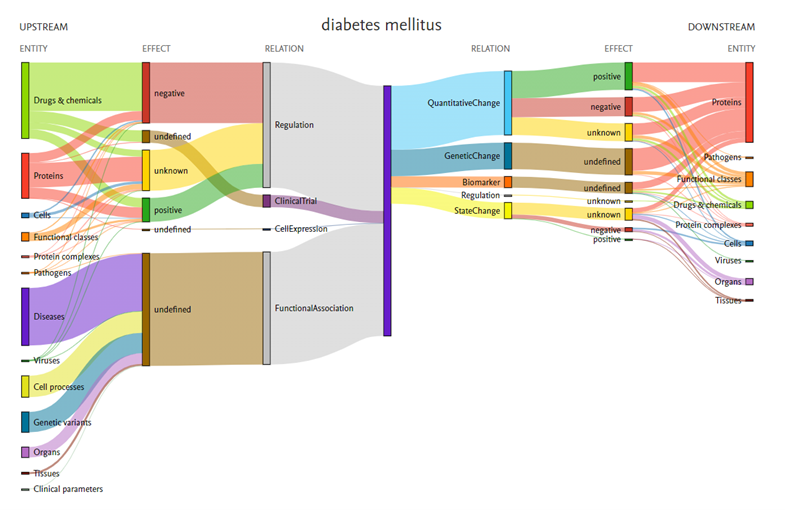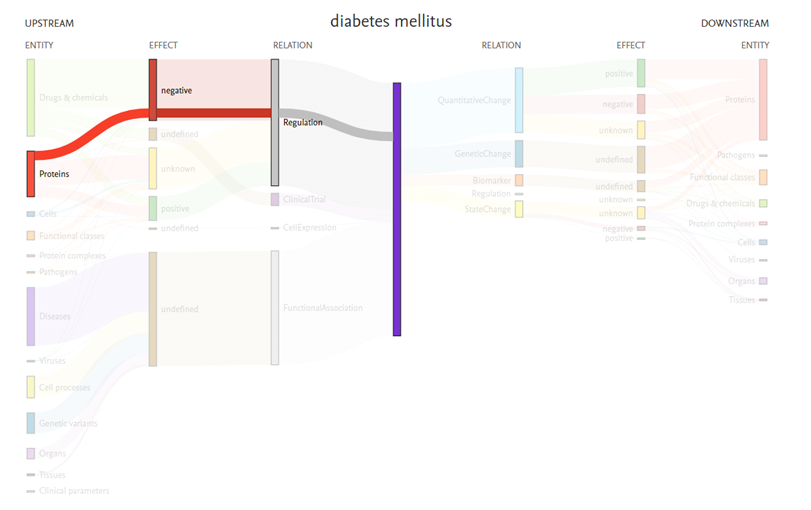View by category
How do I refine my search results?
Last updated on March 07, 2023
It is possible to apply a simple filter by clicking directly on the visual. For example, to filter by proteins that positively regulate diabetes mellitus, click on the corresponding area on the graph:


The results list in this example will include articles that have a primary relationship of proteins that negatively regulate diabetes.
For more complex refinement, use the filter options on the left-hand side:
Publication filters
- References: Allows filtering by a specific number of references per relation. For example, if the No. references per relation = 5, results will include articles/clinical trials where all primary relationships are supported by 5 or more references.
- Publication years: Allows filtering by specific years. For example, setting the lower limit to 1992 and upper limit to 2021 means results will include all articles/clinical trials published between the years 1992 and 2021.
Relation filters
- Direction: results will include articles/clinical trials where all primary relationship are 1) upstream (meaning concepts act on the search term) or 2) downstream (concepts are acted on by the search term).
- Relation: results will include articles/clinical trials where all primary relationships are of the selected relation(s).
- Effect: results will include articles/clinical trials where all primary relationships are of the selected effect(s) – positive, negative, unknown (meaning the effect of the relationship has not been identified) and undefined (meaning the relationship type does not have a positive/negative effect).
Concept Filters: results will include articles/clinical trials where all primary relationships are of the selected concept(s).
For example, selecting upstream, regulation, positive and protein means results will include articles where all primary relationships are proteins that have a positive regulation relationship with your search term.
Did we answer your question?
Related answers
Recently viewed answers
Functionality disabled due to your cookie preferences